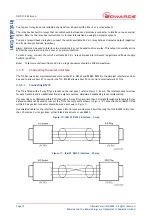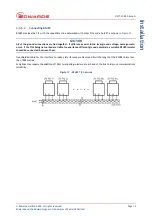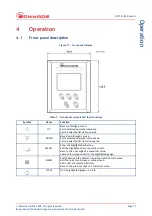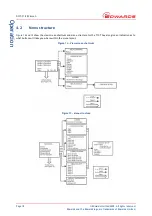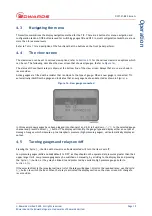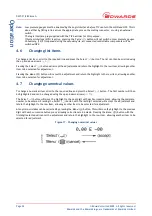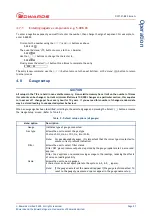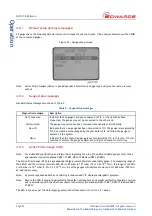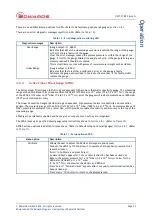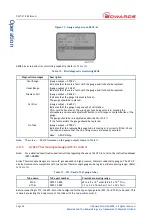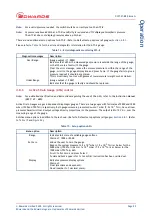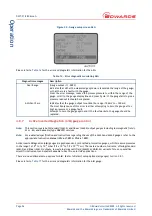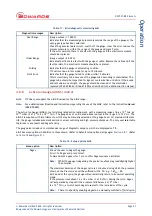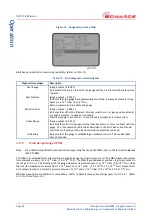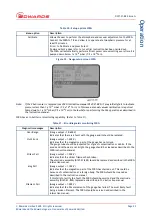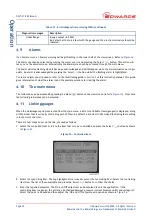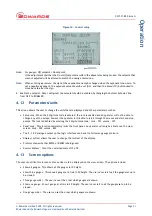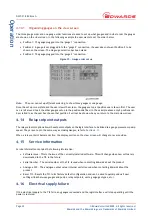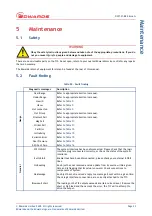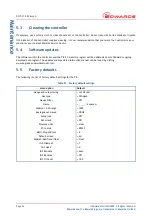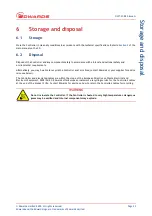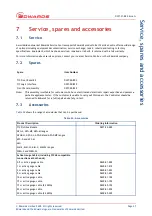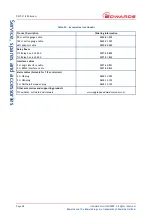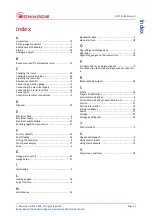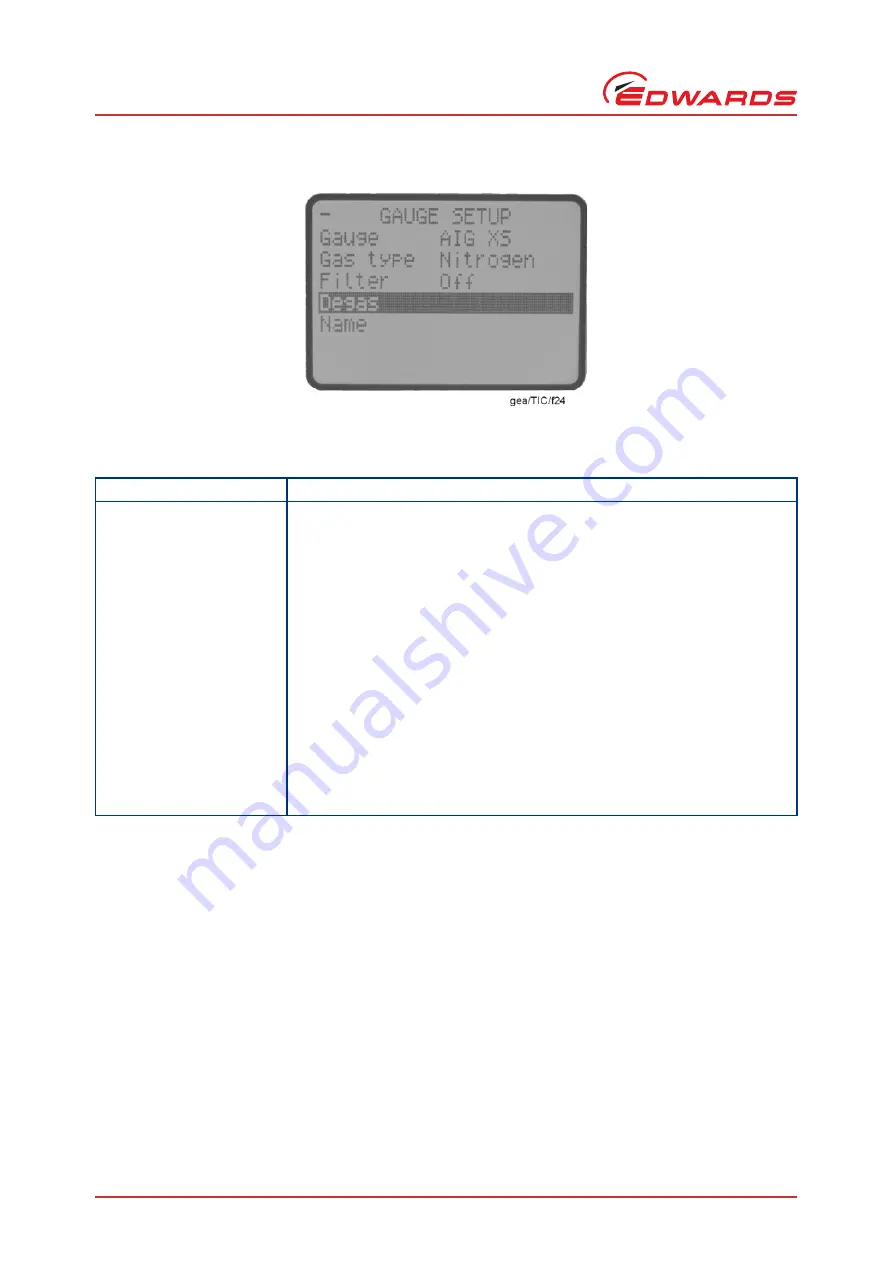
D397-21-880 Issue G
Page 28
© Edwards Limited 2009. All rights reserved.
Edwards and the Edwards logo are trademarks of Edwards Limited.
Operation
Figure 21 - Gauge setup screen AIGX
AIGX has an in-built error monitoring capability. (Refer to
).
4.8.9
Wide Range Gauge (WRG)
Note:
For a detailed specification and instructions regarding the use of the WRG, refer to the Instruction Manual
(D147-01-885).
The WRG is a combined Pirani and inverted magnetron gauge in a single compact unit. The WRG measures pressure
from atmosphere down to 1 x 10
-9
mbar (7.5 x 10
-10
Torr). The WRG is gas dependent and has a log/linear output in
the range 2-10 V d.c. The Pirani part of the gauge measures from atmosphere to 1 x 10
-3
mbar (7.5 x 10
-3
Torr) while
the inverted magnetron measures from 1 x 10
-2
down to 1 x 10
-9
mbar (7.5 x 10
-3
to 7.5 x 10
-10
Torr). Output from
both sensors is used to determine pressure between 1 x 10
-2
and 1 x 10
-3
mbar (7.5 x 10
-3
and 7.5 x 10
-4
Torr).
WRG has menu options in addition to those shown. (Refer to Default setup options (all gauges)
Table 19 - Error/diagnostic monitoring AIM
Diagnostic messages
Description
Over Range
(Gauge output
>
9.800 V)
Indicates that there is a fault with the gauge and the electronics module should be
replaced.
Over Pressure
(Gauge output
=
9.700 V)
Indicates that the gauge has automatically shut down, because of pressure rising
above 6.6 x 10
-2
mbar (5 x 10
-2
Torr).
Reduce pressure and re-enable the gauge.
Emission Error
(Gauge output
=
9.500 V)
Indicates that either the filament is broken (switch over) or gauge was enabled at
too high a pressure – reduce and re-enable.
Electrical supply is out of spec – check the cables (length and cross section).
Under Range
(Gauge output
<
0.025 V)
Indicates that either the gauge internal fuse has blown or there is a fault with the
gauge. The fuse should be replaced as described in the AIGX instruction manual
and if the fault persists, the electronics module should be replaced.
Initialising
Indicates that the gauge is establishing an emission current. This usually takes
about 5 seconds.

